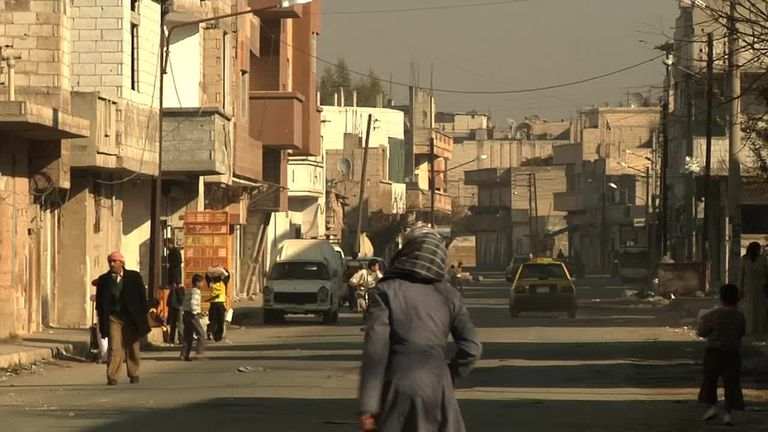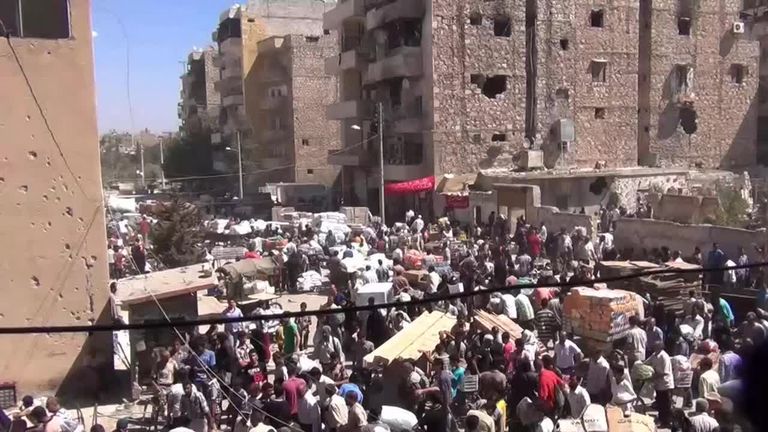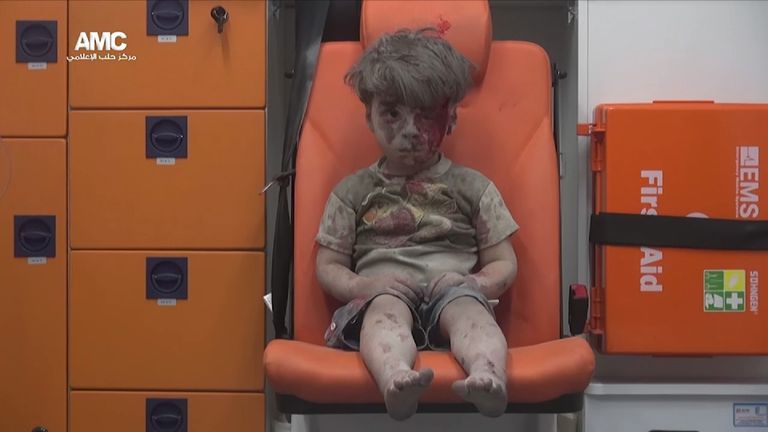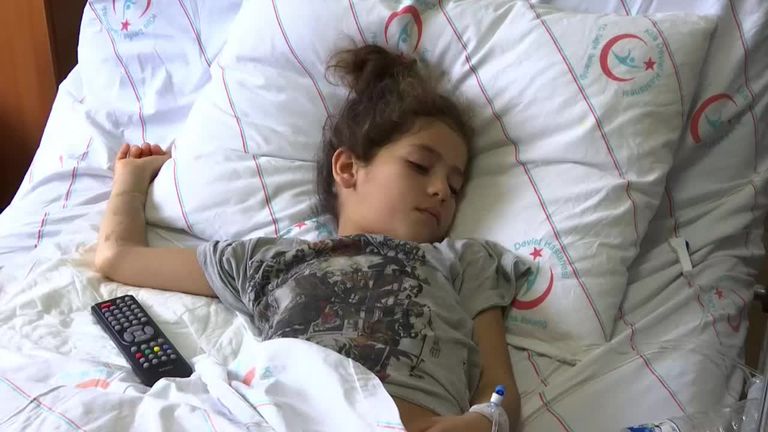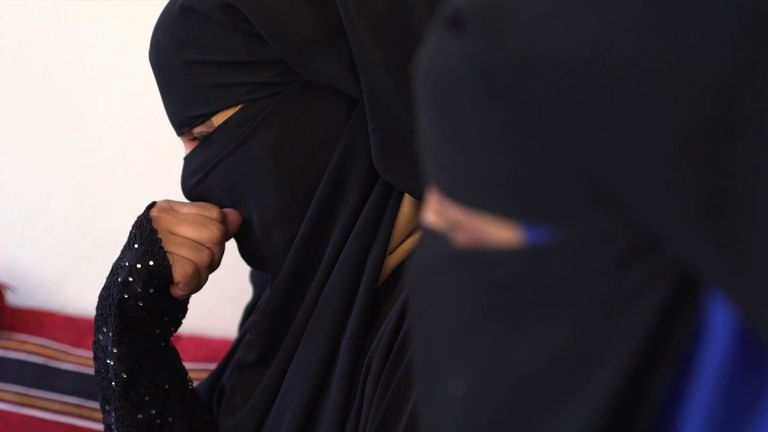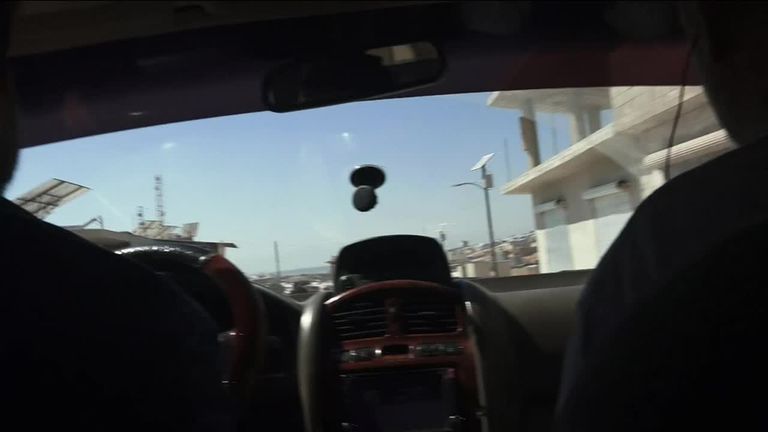What happened to the war in Syria?

Thursday 29 August 2019 17:08, UK
by Philip Whiteside, international news reporter
Growing numbers of governments around the world are acknowledging that the war in Syria is effectively over.
As foreign ministries re-establish diplomatic relations with the regime of the president, Bashar al Assad, Syrian government forces have begun attempting to retake Idlib, the last rebel held territory.
So, how did we get here? What happened to the huge array of groups who, over the years of the war, have opposed Assad?
The start
What were Syria's rebels originally protesting about?
Although many Syrians supported Assad before the war, there were many others who harboured resentment against his rule.
Some of this was as a result of the lack of democracy and cronyism - Assad had been in power since 2000 after being anointed as his father's replacement.
But there was considerable sectarianism too, with some of the majority Sunni Muslims resenting the power that Assad, an Alawite Shia Muslim, both possessed and afforded his allies.
In the previous decades, there had been numerous clashes between the Sunni conservatives and Assad's Ba'athists, some of which had led to the deaths of thousands of people - most notably in Hama where thousands were killed.
In early 2011, protests broke out across the Arab world and North Africa in what became known as the Arab Spring.
The movement spread to Syria when a group of boys were arrested and tortured after daubing anti-government graffiti on a wall.
Many of those who were discontented took up the opportunity to demonstrate against the Syrian regime, and within months, amid a crackdown, the situation descended into fighting.
Where did the fighting break out?
Protests first erupted in several cities in March 2011, and within months had turned into an insurgency.
Who took up the fight?
Quickly, those rebelling formed into various groups, the members of which shared similar aims.
Some of these, like the Free Syrian Army (FSA), shared the secular tendencies of the Ba'athists but opposed Assad.
Others were Sunni Muslims who were driven by their religious beliefs.
With large numbers of Sunnis becoming involved in the growing conflict, into the fray stepped al Qaeda, which was fresh from its involvement in the post-Iraq War violence.
Some Islamic fighting groups allied themselves with the aims of the Free Syrian Army, while others sought a future in which the Syrian state and Islam were intertwined.
Were any of those involved from outside Syria?
Besides al Qaeda, another group involved in the Iraqi conflict also realised it could achieve its aims if it became involved in Syria's war.
Abu Bakr al Baghdadi, the founder of Islamic State of Iraq and the Levant (ISIL), sent fighters into northeast Syria to take part in the insurgency.
Although originally an ally of al Qaeda, he fell out with its spiritual head Ayman al Zawahiri, and ordered his fighters to seize territory.
It resulted in the al Nusra Front, an al Qaeda-affiliated group which had originally been part of ISIL, splitting off and fighting separately.
ISIL's success in taking territory across Syria and Iraq led to a flood of recruits coming into Syria from outside to fight for ISIL, which hailed Raqqa its capital and renamed itself Islamic State (IS).
Where did Islamic State's recruits come from?
The battles
Where did the civil war's main battles take place?
HOMS (2011-2014)
Homs was one of the first places where clashes between protesters and Syrian police intensified to combat.
A brigade from the Free Syrian Army first began ambushing government forces and then took over several neighbourhoods.
They were gradually surrounded and held out for several years before the arrival of Lebanese Hezbollah militia to bolster regime forces forced them to evacuate the city.
ALEPPO (2012-2016)
Syria's second-biggest city and commercial centre was largely peaceful at the start of the war, where only rival demonstrations took to the street.
But by July 2012, the conflict that was escalating elsewhere arrived as rebels who came from nearby villages entered the city and were attacked by government forces.
Several factions, including the FSA, Sunni opposition rebels and the al Nusra Front seized various districts and began a war of attrition against the regime, as front lines moved forward and backwards.
Increasingly, the Russian military became involved and, after capturing several Shia villages on the outskirts, cut off the rebel strongholds in the city and gradually tightened their stranglehold.
By December 2016, with just a scrap of the territory they had held remaining in rebel hands, a deal was struck to allow anyone who wanted to leave to flee. Most headed towards Idlib.
RAQQA AND NORTHEAST SYRIA (2013-2017)
ISIL's battle-hardened Iraqi veterans, sent into the country by al Bagdadi, quickly established themselves in a number of areas, including the northern Sunni-majority city of Raqqa.
In 2013, fighters from ISIL and other mostly Sunni Islamist groups overcame a small government contingent and captured the first provincial capital to fall into rebel hands.
Following a split with al Qaeda, ISIL loyalists - many of whom were foreign - began to concentrate themselves in the Raqqa area (as well as Aleppo), at a point when the group was seizing territory in neighbouring Iraq.
Leaders of the group claimed they had set up a new caliphate, the Islamic State (IS), with Raqqa as its Syrian capital.
The West, fearing the establishment of a new, hardline Islamic nation, began to support rival rebel fighters in the region - the Kurdish YPG.
US-led airstrikes and increasingly well-armed Kurds began to take territory from IS - as they did in Iraq too - driving them back from towns like Kobane, into the city until, eventually, they were forced to flee.
EASTERN GHOUTA (2013-2018)
Like Aleppo, Ghouta took a while to become involved in the conflict, despite initial protests.
By May 2013, however, a face-off between government forces and rebels, mainly from the Jaysh al Islam (Army of Islam), the FSA and various Sunni Islamist groups, led to the eastern part of the area becoming besieged.
It was estimated in 2016 that 400,000 people were in territory surrounded by the Syrian government forces.
A series of brutal operations failed to dislodge the rebels for five years, during which time they sometimes fought among themselves, until in March 2018, after a prolonged pro-government offensive, with assistance from Syria's allies, the rebel-held areas were first split and picked off.
A deal was struck and tens of thousands of people, including rebels, were allowed to leave.
DEIR EZ ZOR (2014-2017)
Government troops in the desert outpost city of Deir ez Zor held out for three years despite being surrounded by Islamic State forces.
After the Syrian army retook control of southern Raqqa province, it was able to turn its attention to Deir ez Zor, and recaptured the city a few months later, pushing out into the surrounding countryside, and taking with it IS's last territories.
DARAA (2011-2018)
Daraa is said to be the cradle of the revolution after the arrest of 15 boys who painted anti-government slogans sparked the Syrian uprising in March 2011.
Already a hotbed of anti-government feeling, Daraa became the location for a major offensive against Assad's forces in 2014, when rebels united under the banner of an umbrella group called the Southern Front.
Clashes between the Southern Front and IS split the resources of the rebels, and when the Syrian army went on the attack in June 2017, and again in 2018, pushed the rebels back, eating away at their territory until they were forced to surrender.
The casualties
How many have been killed and injured?
The UK-based Syrian Observatory for Human Rights, which has been documenting the conflict, said in March 2018 that the war has killed about 511,000 people.
The names of more than 350,000 victims are known, the observatory says, and the remainder are cases where it knows deaths occurred but does not know the victims' names.
A non-governmental organisation, the Violations Documentation Centre in Syria, puts the figure lower, at 190,000 killed as a result of battle, of whom, about 122,000 are civilians.
In a 2018 report, the UN said it had identified 7,000 children who had been killed or maimed since the start of the war.
Where did people who had to leave their homes go?
An estimated 13.5 million people - out of a total pre-war population of 22 million - have been displaced from their homes by the Syrian civil war.
More than six million of those have been displaced inside Syria and a similar number have fled the country to a range of other nations.
Most have not gone very far - with Turkey the country with by far the most Syrian refugees (3.5 million). Huge numbers have also ended up in Lebanon (nearly one million), Jordan (670,000) and Iraq (248,000).
But large numbers have also fled to Europe: Syrians were the largest group of those undertaking the dangerous journey across the Aegean, from Turkey to Greece, during the migration crisis in 2015.
The violence
What are some of the worst atrocities?
CHEMICAL WEAPONS
Use of chemical weapons in the Syrian war was been confirmed by several reports from the United Nations.
Among the weapons alleged to have been used are: sarin (including a claimed attack on the Khan al Asal suburb of Aleppo in March 2013); chlorine (including a claimed attack on the rebel-held village of Kafr Zita, north of Hama, in April 2014); and mustard gas (including a claimed attack on Kurdish fighters in villages in the far northeast in June 2015).
While Islamic State has been blamed for a few of the attacks, the Syrian regimes has been accused of the majority.
Their use came at key points in the war.
After allegations of the first major chemical weapons attack in Ghouta in August 2013, then-US president Barack Obama said Syria had crossed a red line and he would be seeking retaliation.
But after indecision, and when there proved little support for it in Congress or in the UK, he struck a deal with Russia to force Syria to disarm, with hundreds of tonnes of chemicals removed and destroyed.
When an alleged attack took place eastern Ghouta, in the town of Douma in April 2018, it was US President Donald Trump who was under pressure to respond.
Within the next week, the UK, US, France and Israel launched airstrikes against Syrian military bases.
BARREL BOMBS DROPPED ON CIVILIANS
From 2013 to 2018, hundreds of barrel bombs - barrels filled with high explosive and shrapnel - are said to have been dropped in rebel-held areas by the Syrian air force.
They were often focused on areas where rebel forces were under siege, such as eastern Aleppo and and eastern Ghouta.
A study in The Lancet Global Health in December 2017 found about 97% of the deaths caused by the bombs were of civilians - an issue which could constitute a war crime, the researchers said.
DOUBLE TAP AIRSTRIKES
Some of the barrel bomb drops are alleged to have been "double tap" attacks, with the aim of killing and injuring those who rush to help after a first blast.
Among the alleged attacks was a hit on a Medecins San Frontiers hospital in Homs in December 2015 and several attacks on the White Helmets rescue teams, according to The Economist.
RAPE AND MURDER OF CAPTIVES
There have been widespread reports of rape being used as a weapon in the conflict, with international NGO International Rescue Committee among others, saying that it is fear of the sex crime above anything else that had forced many Syrians to become refugees.
While all parties have been blamed in the seven-year war, greatest attention has been paid to the abuse metered out by Islamic State.
The UN Commission of Inquiry on Syria found that women in territory controlled by IS, particularly Yazidis, "endured brutal rapes, often on a daily basis".
Islamic State has also been blamed for the mass execution of unknown numbers of prisoners of war, civilians, and even its own fighters who tried to defect.
IS BEHEADING WESTERNERS
In summer 2014, soon after Islamic State declared its caliphate, videos began to emerge on the group's news services of Western journalists and aid workers being beheaded by a shadowy British-accented figure who became dubbed "Jihadi John".
Before the end of the following January, videos purporting to show or prove the murders of at least seven US, British and Japanese civilians had been released. Dozens of others are also thought to have been decapitated.
Jihadi John, whose real name it later emerged was Kuwaiti-born but London-raised Mohammed Emwazi, was later killed in an airstrike. Two other members of a group which held Westerners hostage, dubbed "the Beatles" because of their British accents, were later captured and are awaiting justice in Kurdish-held territory.
What else has been destroyed?
PALMYRA
Once a stronghold of the Syrian regime, Palmyra was a publicity coup for Islamic State when they took it from Assad's forces in 2015.
As well as being one of the best preserved Roman-era Middle Eastern cities and a UN World Heritage Site, Palmyra was considered notable for the quality, time-range and scale of its architecture.
As they had done in Iraq, IS set about destroying what they saw as infidel symbols, blowing up many of the sites with explosive, including the huge Temple of Bel, despite its former use as a mosque.
The temple contained decorative motifs which are said to have heavily influenced British architectural styles that became predominant during the Georgian period.
ALEPPO
The ancient city of Aleppo, the roots of which go back many millennia, is another UNESCO World Heritage Site which has suffered extensive damage during the war.
Its medieval mosques and covered souks had been used by visitors for more than 1,000 years before they were attacked and largely destroyed in fighting between rebels and the regime.
UNESCO estimates 30% of the ancient city has been reduced to rubble.
Which other countries have got involved?
While many Western countries were quick to declare their support for the rebels in the early stages of the revolution, it took some time before any took decisive action.
Assad's alleged use of chemical weapons, however, changed the attitudes of many governments, and the advance of Islamic State meant some leaders felt compelled to act - often covertly.
What is happening now?
Who remains in the fight?
Still fighting the Syrian regime are a number of rebel groups which have morphed significantly since the war started years ago.
Some are also continuing to fight each other, as the skirmishes for territory go on.
What does the future hold?
As Assad's forces retook control of the many of the areas caught up in the war's biggest battles, many of those evacuated fled to Idlib.
With thousands of extremist rebels in Idlib and millions of civilians sheltering there, having fled conflict in other areas, there are fears about what could happen in coming months.
If Assad does sweep across the province, the consequences would be not just the deaths of and injuries to those caught up in the battle and the crossfire: it is feared it would spark a new refugee crisis.
Another danger is to Syrians living in areas where rebels are still fighting each other.
The announcement by Mr Trump before Christmas 2018 that he will pull troops out of Syria threatened to create a power vacuum in rebel-held areas, disturbing the uneasy status quo that has existed since IS were defeated.
Recep Tayyip Erdogan, who, as president of Turkey, is leader of a country where 3.6 million Syrians have already fled as refugees and which backs one of the rebel factions that remain, has warned of a "humanitarian tragedy" looming if the fighting doesn't stop.






